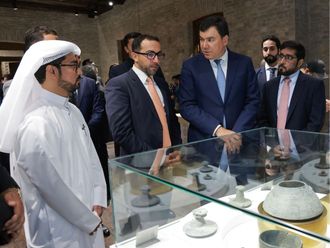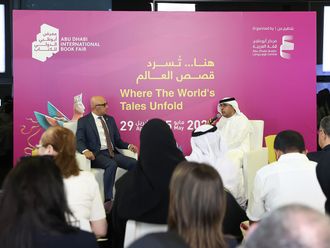Dubai: Powerful electromagnetic fields from high-voltage power lines in Jebel Ali may be affecting the health of residents in the area.
The World Health Organisation (WHO) said there is no public information about the strength of the power lines.
Even experts do not know if people are being exposed to dangerous levels of electromagnetic fields (EMF).
EMFs, however, are present in daily life. Common sources include power lines, electrical appliances and broadcast facilities. There is much scientific debate about the safety level of EMF for the public to be exposed to.
WHO, which looks closely into the matter, says studies do show "weak links" between exposure and human disease. Concern about the issue caused WHO in 1999 to ask countries to adopt "a more preventative, pro-active approach to hazards".
Gulf News requested Dr Hassan Hijazi, Chairman of the Electrical Engineering Department at the UAE University, Al Ain, to inspect EMF levels in south Dubai, close to high-voltage power lines.
"EMF can be considered as unsafe between 5 to 10 miligauss. Several factors will affect that reading, and the most important thing is duration how often one is close to a high EMF reading," he said. Hijazi acknowledged studies about the danger of EMF exposure were not conclusive but said "safety thresholds" meant to inform the public of risk "so high they provide no real measure of safety".
He added burying electrical cables was not safe, unless cables were encased in a steel pipe. "The cost of that is very high."
Dr Hijazi took EMF measurements under powerlines about 50 metres away from a building site parallel to the Gardens in Jebel Ali.
A Dubai Electricity and Water Authority (Dewa) spokesperson told Gulf News that the utility company does not allow buildings 50 metres to either side of powerful lines. At a distance of about 50 metres, the reading was minimal, 3.2 miligauss.
"The first set of powerlines don't appear to carry any load at all," Hijazi said.
At the second set of powerlines located around a metre away from the first, the EMF metre jumped to 20 miligauss from about 30 metres away, and peaked at 60 underneath.
The powerlines made a persistent noise, which Hijazi said was often indicative of "noise pollution" than of harmful presence of EMFs. However, he said those exposed to continuously and high levels of EMF should be concerned.
"Construction workers are working near the lines day and night. That's a health risk." Down Shaikh Zayed Road, from the Jebel Ali Gardens bridge to the Dubai Marines area, the EMFs stay low at about 1.5 miligauss, but under one set of lines, peaks at 63.
Hans-Joerg Schlueter, from Step Ahead International Ltd, UK, and Telematics Network & Communications, Dubai, said major risks to health were unlikely, but the public had a right to know about the powerful equipment in the area. "The question is it harmful can't be answered by 'yes' or 'no'. In normal circumstances it's not a risk, if you monitor it, control it, know about it. The public has a right to be informed," Schlueter said.
It's not just power lines the public should be informed about, the two scientists said. "Fluorescent lamps, electric shavers, digital clocks, everything that generates electricity provide an EMF, sometimes worse than being close to power lines," Hijazi said.
While Schlueter cautioned against panic, he suggested authorities look to define regulations for non-ionising radiation "up to 300 GHz" similar to the 2002 Federal Law for the regulation, control and protection of ionising radiation.
Measures
A Dewa spokesperson said the utility company applied "the best international standards" and said: "There is no chance overhead power lines can be placed over residential areas."
"High-tension overhead power lines are usually placed in a special corridor with a width of more than 50 metres where construction is not allowed,"
he said.
He said construction in south Dubai was carried out according to international standards and that "no construction has been allowed near the overhead lines' corridor".












